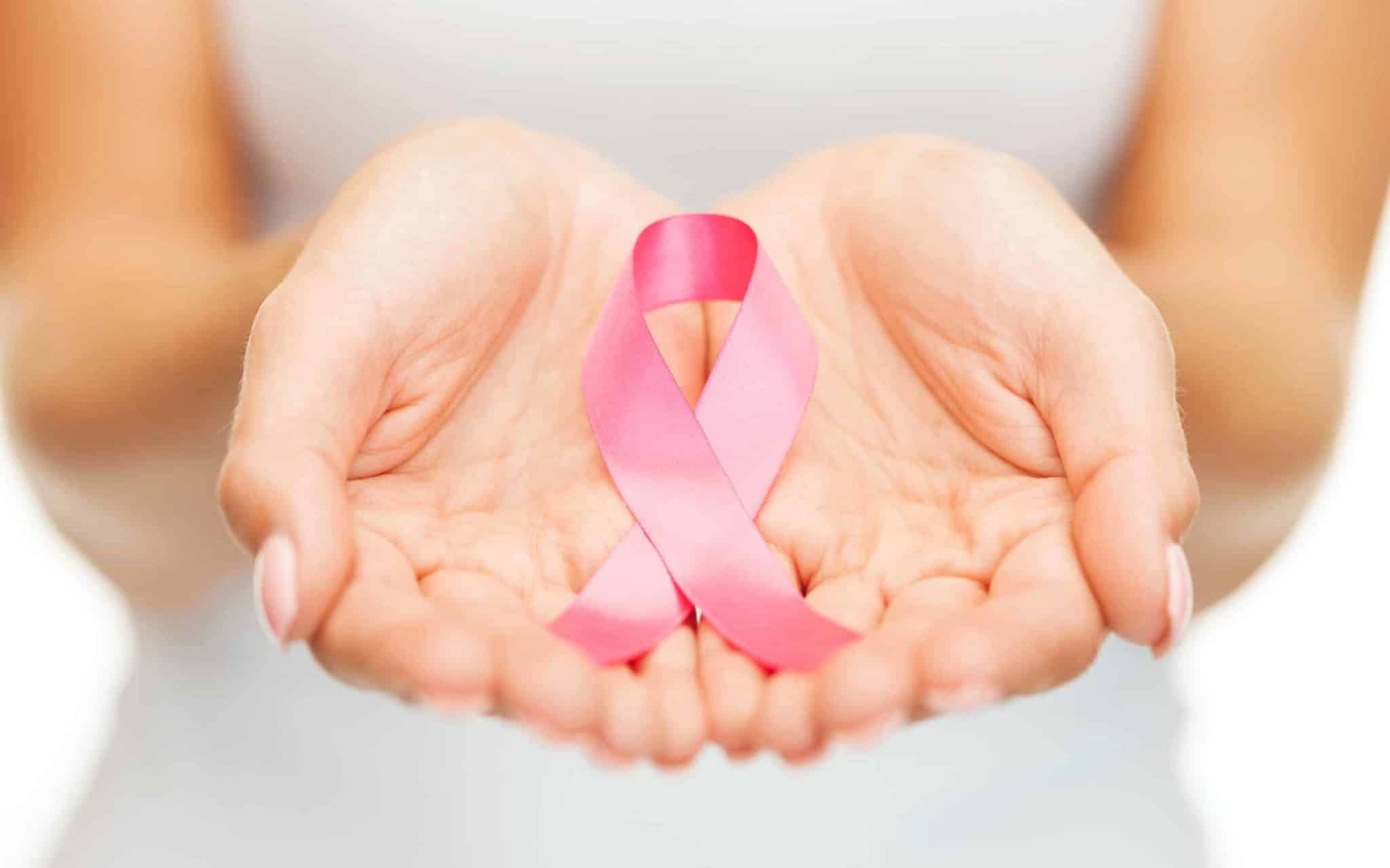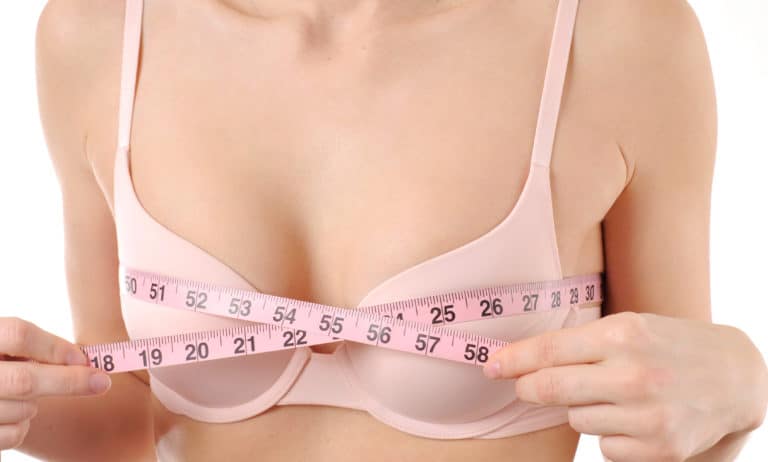Causes | Cancer Risk | Treatments | Key Takeaways | FAQs

Medically Reviewed April 2023, by Claire Clarke - Head of Surgical Services for The Harley Medical Group
What is breast asymmetry?
Literally speaking, “breast asymmetry” means that the two breasts are not mirror-image-identical to one another but differ in one way or another. In truth, this is actually completely normal. In fact, the vast majority of women have uneven breasts. The problem occurs when that unevenness is so marked that it becomes very obvious.
Breast asymmetry (also known as uneven breasts) occurs when a woman has one breast that is a different size, position or volume to the other. It is a very common condition that affects more than half of all women. There are three types of breast asymmetry:
- Anisomastia: this is where you will notice a significant difference in the volume and size of your breasts.
- Anisothelia: this is where you will mainly notice a difference between your nipples and areolas.
- Combined asymmetry: this is a combination of anisomastia and anisothelia.
Uneven breast causes
Uneven breasts are caused by several different factors. For example, developmental (“they just developed that way”). This often becomes apparent going through puberty, water retention and blood flow, or hormonal changes as a result of ovulation and pregnancy.
Having a noticeable difference in the appearance, size or shape of one breast compared to another can also occur as a result of underdevelopment or overdevelopment of the breast due to a condition called juvenile hypertrophy.
Other causes can include:
- Physical trauma to the breast
- Using hormonal contraceptives
- Breastfeeding
- Poland syndrome
- Breast cancer

Breast asymmetry and cancer risk
Uneven boobs are very common, and in most cases are not a cause for concern. However, if your breast density suddenly changes or there is a large variation in the asymmetry of your breasts, then this could be a possible indicator of breast cancer.
Research has found that women with a breast asymmetry ratio of over 20% may be at higher risk of developing breast cancer.
It is imperative to have regular mammograms to ensure that any breast irregularities are identified and treated early. Any abnormal changes in the breast should always be checked by a doctor.
Mammogram results
During a mammogram (scan of the breast), the internal structure of your breasts will be examined.
Although it is common for breasts to be of two different sizes, usually they will have a similar internal structure and density. However, if your breasts are asymmetrical due to density reasons, your doctor will classify the difference using one of four categories:
- Asymmetry: If a lesion or abnormality is found, your doctor will send you to have a three-dimensional imaging test so that they can build a clearer internal picture of your breast for further examination.
- Global asymmetry: This is where one breast has more volume or density than the other, normally as the result of hormonal changes.
- Focal asymmetry: A density can be seen on two mammographic views, and further imaging and evaluation will be required to determine what it is.
- Developing asymmetry: A significant change has been detected between past and current exams, and could potentially be a sign of malignant cells.

Breastfeeding and uneven breast size
Experiencing a certain amount of breast asymmetry is a normal part of breast feeding, especially if one of your breasts receives more stimulation than the other as a result of your baby preferring one breast over the other or if you feed on the same breast most of the time.
This can cause one breast to grow larger as it produces more milk, and alternating which breasts you feed from can help to avoid this problem.
For most breastfeeding mothers, asymmetrical breasts are not a medical concern. However, if one of your breasts has remained smaller from the beginning of your pregnancy and did not get any larger, visit your doctor for a consultation.
Treatments
Breast enhancement
If you have extremely uneven breasts then having a breast enlargement operation (where a breast implant is surgically inserted behind your breast tissue to make it bigger) may help to improve your self esteem and confidence.
Breast reduction
Instead of having one breast enlarged in order to match the size and shape of the other, another option to consider is breast reduction or an uplift of the larger or more ptotic (“saggy”) side. This involves removing excess fat, skin and glandular tissue from the breast, and can help to reduce any discomfort that you may have such as back pain.
Combined uplift and augmentation
Sometimes the issue is best addressed by actually combining a breast lift and an augmentation. This can have the advantage of addressing both “sag” and lack of volume and can be done differentially to match the breasts as much as possible.
Non-surgical
If you have uneven boobs, then there are non-surgical options to help improve the appearance of your breasts. For example, a specially fitted padded bra or foam or gel inserts for an existing bra will not only help to give you an even shape but they can also give you more confidence when wearing certain clothes too.

When to see a doctor
Most changes to the size of your breasts are caused by changes in your hormones, which will naturally correct on their own.
However, if these changes in your uneven boobs do not go away or if you experience any of the following symptoms, you should visit your doctor as they will be able to check for any possible health problems:
- Swelling in one of your breasts
- Pain in your chest area
- Nipple discharge or fluid
- Abnormal changes to the nipple
- A one-sided lump on one of your breasts that has suddenly appeared
- The variation between the size of your breasts is significantly large
- The skin around the breast is red, itchy, flaky or firm and dimpled (like orange peel)
- The tissue around the breast or under the arm feels firm or thick
Speak to a patient advisor
Key takeaways
Breast asymmetry is a very common condition and in most cases is quite normal. However, if you notice any sudden changes which are not normal for you, then you should go and see your doctor for advice in order to rule out malignancy (cancer).
In addition, if your breast asymmetry is affecting your confidence or self esteem, then having breast enlargement, breast uplift, breast reduction or a combination procedure can give you the appearance that you are looking for.
Related Conditions

Saggy breasts (breast ptosis)
Sagging breasts or ‘breast ptosis’ is usually nothing more than a harmless, aesthetic feature. Breast ptosis often refers to lower appearing nipples, or those that point downwards and it can range from mild to severe...

Small breasts
Usually, when a woman considers that she has small breasts, she often means that she feels they are small for her frame. However, in rare cases, small breast size isn't just an aesthetic matter. Sometimes, breasts fail to develop properly for medical reasons...

